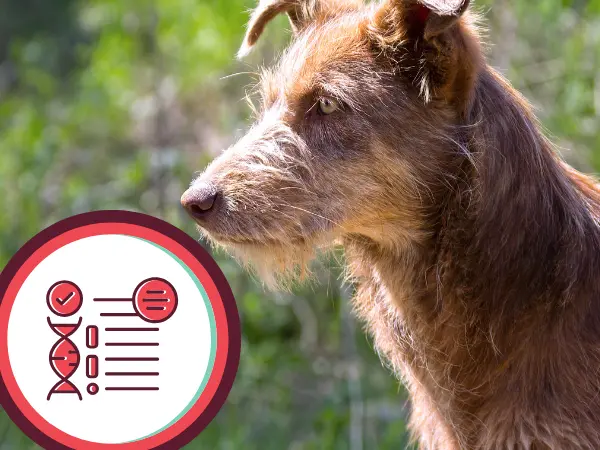Nobody knows your canine best friend like you do. If you’ve been with your canine companion for a while, you probably already know when they’re feeling playful, hungry, relaxed, scared, or under the weather — just from their behavioral cues. Some of these cues may be unique to your dog while some are universal signals in dog body language.
Understanding Your Dog's Body Language
By learning dog body language, you’ll be able to pick up on the nuances of dog body language. This does not only help in understanding your own dog; you will also be able to read the body language of other dogs —, especially the ones that your dog will interact with in settings like dog-friendly bars, off-leash dog parks, and etc.
Read below as our team at Sploot Veterinary Care reviews 11 common dog body language signs and their meaning.

Tail Wagging
One might instinctively think your dog is happy when you see them wagging their tail. But, like many types of dog body language, tail wagging can mean several different things, including excitement, anxiety, frustration, or another emotion. So noticing the speed and position of your dog's tail can tell you why they're wagging it.
Your dog may wag their tail in a slow, side-to-side, sweeping manner when they greet you, likely meaning they're happy and relaxed. If a fast "helicopter" wag causes your furry friend's whole body to wiggle, they’re likely thrilled to see you. A rapid, fast-twitch wag indicates a higher level of excitement.
A low tail wag or one between the hind legs indicates uncertainty, fear, and stress. If you notice your dog holding their tail high and stiffly wagging, your dog might be feeling alert and agitated by something. You may need to take action to prevent your dog from becoming aggressive.
Note: Consider your dog's breed when interpreting their tail wag. Some breeds, such as chow chows and Akitas, have naturally high or curled tails, while others, such as Italian greyhounds, have a low tail position. If you know your dog's natural tail position, noticing their wag's speed and position can help you pick up on their changing emotions more easily.
Tail Between the Legs
“Tucking one’s tail between the legs” is a commonly used expression that has its roots in dog body language. When our canine companions do this, it typically means that they are feeling frightened or unsure. It is common for canines to exhibit this behavior in the presence of a dominant dog or a person that they’re afraid or unsure of.
If a dog has their tail between their legs, their ears flat against their head, and is moving away, it means they are particularly frightened by something or someone. If you observe this type of behavior in your pup, it is a sign that they need to feel safe. The manner by which you can help Fido feel safe would depend on the situation — whether it means helping your dog calm down amidst fireworks or taking them to the lower-energy section of the off-leash dog park.
Perked Ears
When your dog points their ears stiffly forward, it means they are on high alert. Your dog could be interested in something like a squirrel running along the fence line or threatened by a loud noise. Follow your dog's line of sight and consider what's happening around your dog to determine what has made your dog extra wary.
The action you need to take would depend on the situation. If the situation is safe and your dog is secure (i.e. will not run away into an open expanse), this may need no further action apart from allowing your dog to calm down.

The Freeze
In some instances, a dog might freeze and stand motionless while playing with other dogs. This could be just their way of regrouping. A dog might also stand motionless in a stiff position if they are stressed, threatened, or scared.
If you notice your dog freezing and exhibiting other signs of stress, it may be best to recall them for reassurance or to remove them from the threatening stimulus.
Rolling Over
Typically, a dog rolls over to show submission and happiness or to ask for a belly rub. This is likely the case if they wag their tail and opens their mouth in a relaxed way.
But if you notice that your dog’s tail is between their hind legs and their facial expression or body is tense, they may be rolling over because they're scared. Similar to many items on this list, the action you need to take will depend on the situation. If you think your dog is in an unsafe or stressful situation, try to call your dog back to you if they are not by your side.
Cowering
When a dog cowers, they crouch low to the ground, typically out of fear or stress, to make themselves look smaller and submissive. They might also move away like they're trying to escape someone or something. Dogs may also pair cowering with hiding.
In case a dog exhibits the above behaviors, it would be best to avoid cornering the dog or moving too quickly towards them as this can cause them anxiety which can escalate into aggressive behavior.

Raised Hackles
A dog's hackles are the hairs that run along their spine from the neck to the tail. Raised hackles are a result of a reflex action that causes the fur to stand on the dog’s shoulders and back. It can mean that the dog is extremely excited, afraid, or aggressive.
One would be able to decipher what a dog's raised hackles mean — based on the dog’s other behaviors going on at the same time, such as tail wagging or growling. If you notice that your dog has raised hackles, has a stiff body posture, and is growling, it may be a sign that they are about to get aggressive with another dog. Try to distract your dog to prevent the situation from escalating.
Play Bow
A play bow occurs when a dog lays their front legs and chest on the ground but keeps their hind end in the air. This dog body language usually indicates playfulness. A dog will often perform a play bow to other dogs and humans to get them to chase or play.
Though play bows between dogs mean that they are playing, it is recommended for pet parents to keep a close eye on their pups, especially when they are interacting with stranger dogs.

Showing Teeth
When a dog shows teeth, this is often immediately perceived as aggressive dog body language. However, this is not always the case. Some dogs may "grin," pulling back their lips and displaying their teeth to show submission.
As with most items on this list, it’s important to assess the situation carefully and consider other behaviors. A dog showing their teeth but is partially or wholly cowering is showing submission. Meanwhile, a dog showing teeth, barking repeatedly, growling, and has raised hackles is being aggressive or is about to be aggressive. Make sure to approach each situation with care.
Eye Contact
A dog with hard eye contact or an intense stare might be aggressive or feel threatened. One with soft, relaxed, squinty eyes is typically calm, relaxed, and happy. A dog that looks away or avoids eye contact might feel stressed or uncomfortable.
Panting
While it's normal for a dog to pant when hot, this sign can also indicate stress, pain, or fear. If your dog is panting when it's not hot and hasn't been active recently, consider whether they might be anxious or in pain. When in doubt, consult your local veterinarian.

Final Thoughts on Common Dog Body Language
As a final reminder for pet parents, look at the entire picture when reading dog body language. Most dogs display several body language cues simultaneously. Consider every cue, including tail position, posture, and expression. In doing so, you can better understand your dog and other dogs that will socialize with yours.
If you have questions about dog body language or concerns about your dog's behavior (whether it’s aggression, anxiety, or unexplained panting), reach out to us today!
Sploot Vets: Your Trusted Provider of All-in-One Care
Sploot Veterinary Care provides all-in-one veterinary care, with primary care, urgent care, and emergency vet services all under one roof! We have multiple convenient locations in Denver, Chicago, and Colorado Springs. We offer daily appointment availability and extended clinic hours, all in a modern and comfortable setting for you and your pet.
If your dog is exhibiting dog body language and behaviors that concern you, book an appointment today for a behavioral veterinary consultation at one of our multiple clinic locations.
Till next time, we’re with you every pounce of the way!






